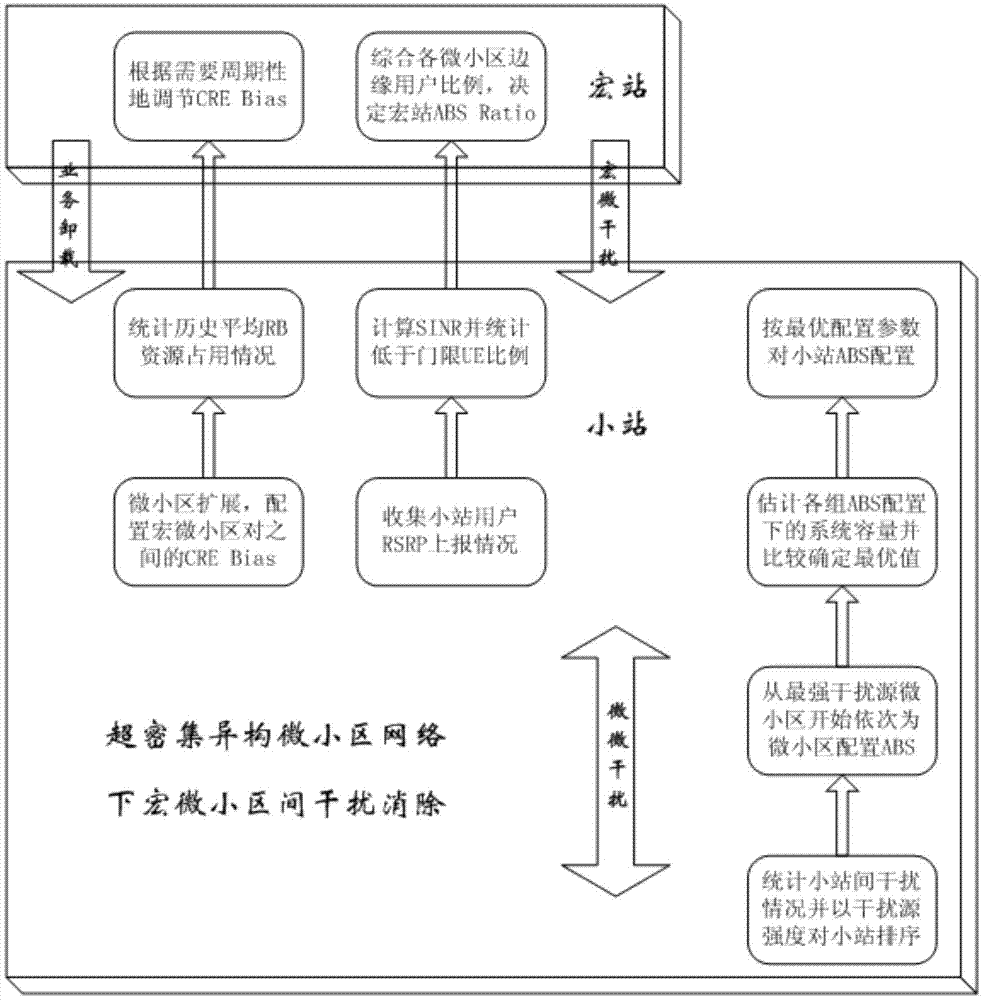Cross-layer interference coordination optimization method in super dense heterogeneous network
A heterogeneous network, cross-layer interference technology, applied in network traffic/resource management, electrical components, wireless communication, etc. Throughput performance, the effect of ensuring system edge performance
- Summary
- Abstract
- Description
- Claims
- Application Information
AI Technical Summary
Problems solved by technology
Method used
Image
Examples
Embodiment Construction
[0036] The following LTE-A system is taken as an example to further illustrate the present invention.
[0037] Such as figure 1 Shown is a cross-layer interference coordination optimization method under ultra-dense heterogeneous networks, including the following parts.
[0038] The first step is the expansion strategy of the small cell range
[0039] The small cell needs to count its own historical resource occupancy to determine the ability of the small cell to accept services after the expansion of the range, that is, to determine the service capability of the macro cell formed after the expansion of the small cell. The historical average resource block (Resource Block, RB) occupancy / idle rate can be calculated by measuring the historical resource usage of the small cell. A gradual CRE configuration strategy is adopted to approach the upper limit of user load of the small cell:
[0040] 11) Initially, a lower CRE offset will be uniformly set between all macro station / smal...
PUM
 Login to View More
Login to View More Abstract
Description
Claims
Application Information
 Login to View More
Login to View More - R&D
- Intellectual Property
- Life Sciences
- Materials
- Tech Scout
- Unparalleled Data Quality
- Higher Quality Content
- 60% Fewer Hallucinations
Browse by: Latest US Patents, China's latest patents, Technical Efficacy Thesaurus, Application Domain, Technology Topic, Popular Technical Reports.
© 2025 PatSnap. All rights reserved.Legal|Privacy policy|Modern Slavery Act Transparency Statement|Sitemap|About US| Contact US: help@patsnap.com



